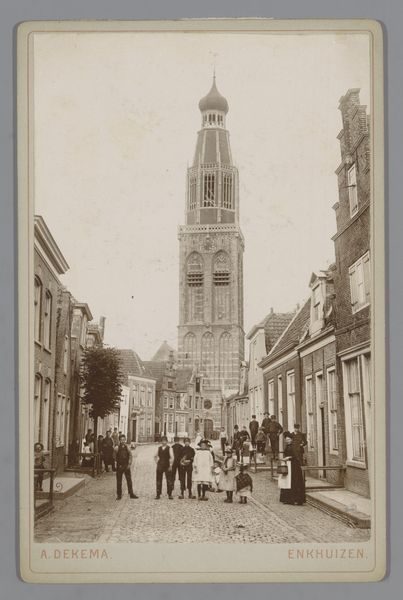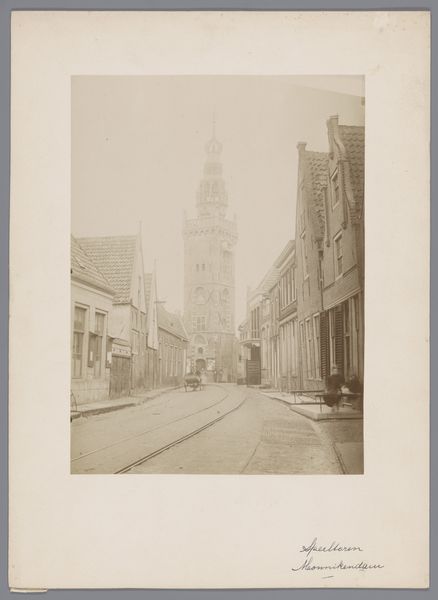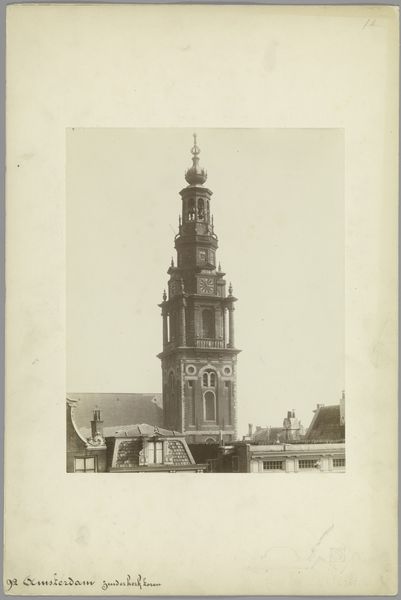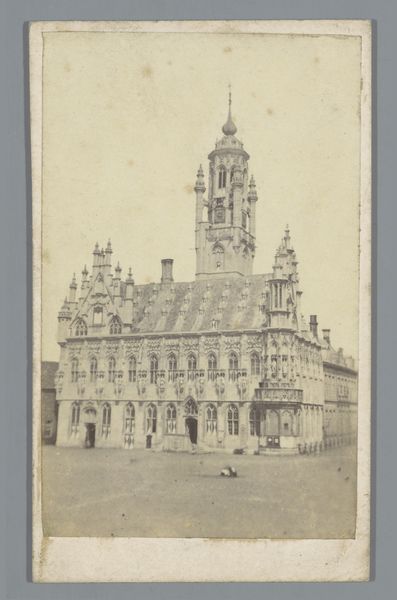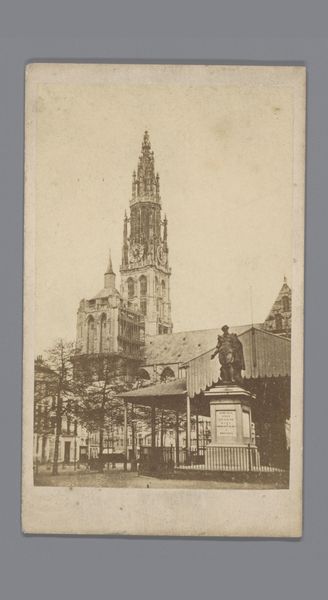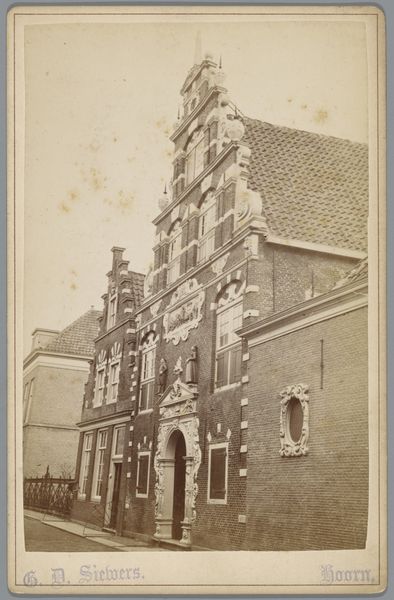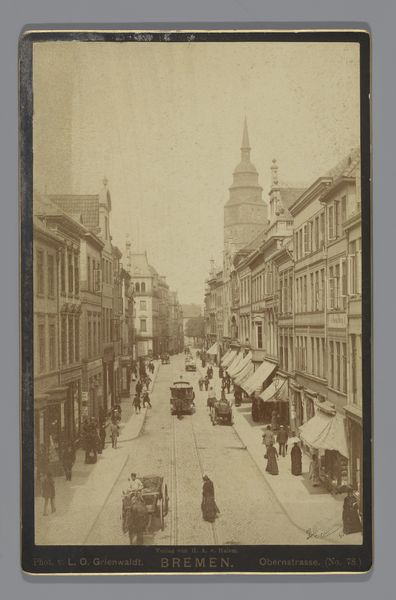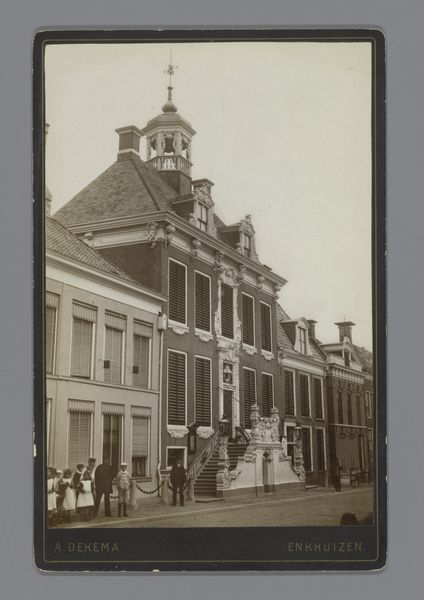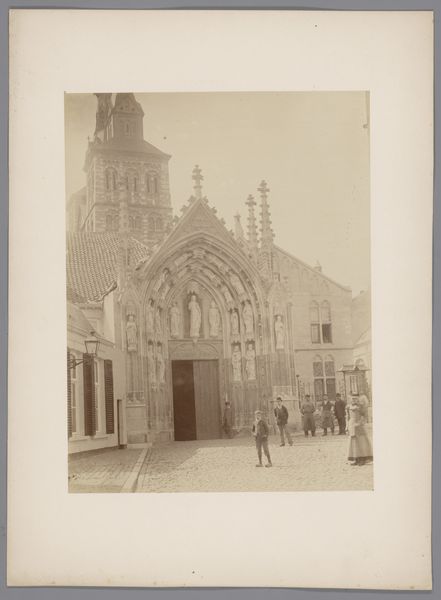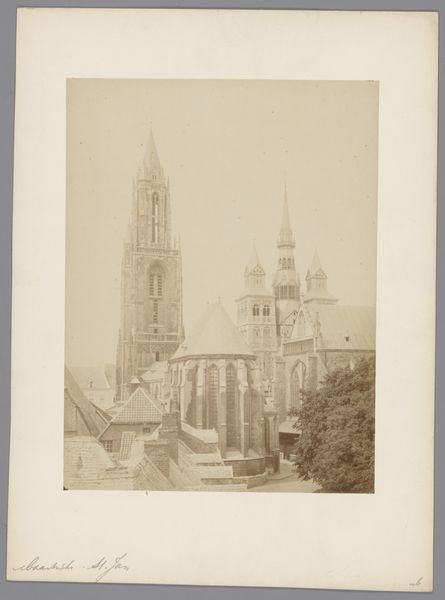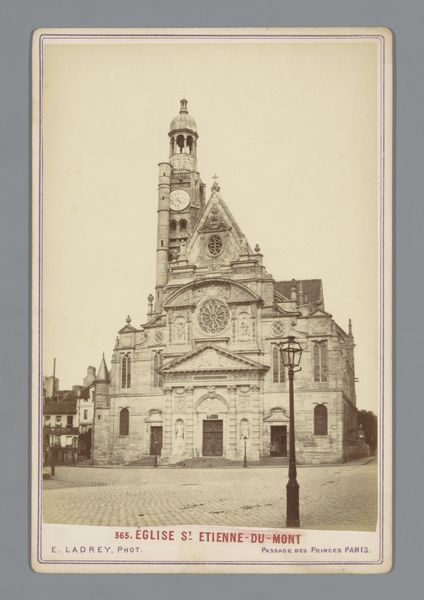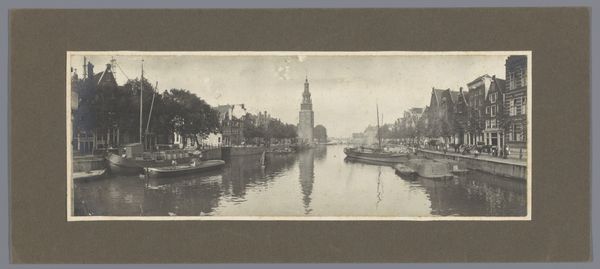
Straatgezicht met de toren van de Zuiderkerk te Enkhuizen 1865 - 1896
0:00
0:00
photography, gelatin-silver-print
#
pictorialism
#
landscape
#
photography
#
gelatin-silver-print
#
cityscape
Dimensions: height 149 mm, width 99 mm, height 167 mm, width 109 mm
Copyright: Rijks Museum: Open Domain
Curator: This gelatin-silver print, "Straatgezicht met de toren van de Zuiderkerk te Enkhuizen" by Albert Dekema, captured sometime between 1865 and 1896, presents a tranquil Dutch cityscape. Editor: It has a stillness, doesn’t it? Almost like a dream. The sharp edges of the architecture are softened by the muted tones, lending it an ethereal quality. Curator: Absolutely. Dekema, working within the pictorialist style, wasn’t just documenting, but crafting an atmosphere. That church tower dominates, serving not just as architecture but as a powerful symbol. Editor: The church becomes a looming guardian, doesn’t it? I am intrigued by the placement of the figures too, along the side of the road. What were the political tensions during that time that may be in interplay with the use of symbols of civic power and religious views? Curator: Precisely. Consider that towers traditionally represent connection to the divine, aspiration, and order. Here, the scale seems to be emphasizing those traditional aspects in the wake of the Modernism that was sweeping Europe. It may hint at social conservatism or maybe the simple reassuring nature of life continuing as usual in smaller areas. Editor: That conservative lens is intriguing. I imagine the burgeoning industrial revolution creating tensions with these more sleepy areas. What message was the photographer aiming to evoke by blending city and religious symbols with people’s ordinary lives? Curator: Perhaps that message is found within the very stillness we remarked upon at the start, representing a slower pace of change. Also note Dekema's darkroom manipulations, common for the Pictorialists. The softened focus almost obscures any evidence of technological innovation, making it less documentary and more artistic. Editor: Indeed. The softened edges and almost monochrome tones elevate it beyond mere record-keeping. It reminds us how photographs of everyday life can freeze and idealize, becoming vehicles for cultural memory, social commentary, and longing. Curator: The lasting power of this image, despite its quietness, resides in the way it evokes continuity and offers, maybe even insists on, stability. A powerful image, and so indicative of its time. Editor: Agreed, Dekema shows us not just a place, but a moment caught in amber—revealing the cultural landscape just as much as the physical one.
Comments
No comments
Be the first to comment and join the conversation on the ultimate creative platform.
